|
|
 |
 |
  |
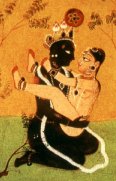 |
|
|

|
| |
|
|
INDIAN SOCIETY |
|
| |
|
India,
Bharat, Hindustan … |
|
| |
|
|
|
| |
|
… A society as contradictory as the land is colorful. Past and present, |
|
| |
|
all jumbled together. Change and continuity existing cheek by jowl. |
|
| |
|
|
|
| |
|
| One set of statements on contemporary |
|
|
| India is likely to be as true as any
other. |
|
|
| A set may go like this: Indian
society is |
|
 |
| changing rapidly. The impact
of modern |
|
| media,
especially television, is |
|
| revolutionizing
the relationship between |
|
| the sexes. Women are
demanding a much |
|
| greater role for
themselves. In both
love |
|
| and work.
Sexual permissiveness is on the |
|
| rise.
The power balance between the |
|
| generations has shifted. The young are
no |
|
| longer respectful of the aged. The
social |
|
| landscape is in a state of flux.
Western |
|
| culture has penetrated deeply
into the |
|
| urban areas. Religion and
religious values |
|
| are in a process of decline. |
|
|
| |
|
|
|
|
| |
|
|
| |
|
|
| |
|
|
| |
|
|
| |
|
|
| |
|
|
| |
|
|
| |
|
|
| |
|
|
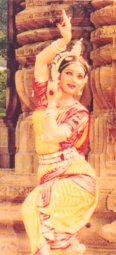 |
|
|
| |
|
| |
|
| |
|
| |
|
| |
|
| |
|
| |
|
|
Yet another set of statements, equally true,
may |
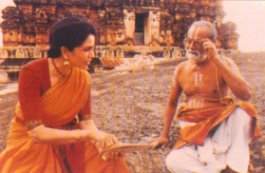 |
|
go like this. Under all apparent signs of
modernity, |
| |
Indian society remains deeply
conservative. More |
| |
than three quarters of all
Indians still have their |
| |
first sexual experience
within marriage. Children |
| |
and family remain
the priority of all women. Even |
| |
of those dedicated to their careers.
The family, |
| |
with its traditional patterns of command and |
| |
deference, remains the cornerstone of
Indian |
| |
society. Far from declining, religion
is enjoying
an |
| |
unprecedented revival. The
heyday of Western |
| |
style individualism is long
over. People are again |
| |
turning to family and
community in search of |
| |
meaning. The Indian
vision of fulfilled life remains |
| |
unchanged. |
| |
|
|
|
|
| |
|
| |
|
| |
|
| |
|
| |
|
| |
|
|
| |
|
|
| |
|
|
| |
|
|
| |
|
|
| |
|
|
| |
|
|
| |
|
|
| |
|
|
| |
|
|
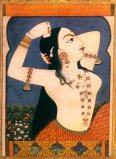 |
|
This page will seek to resolve the contradictions where it can and explore them in all their
fascinating |
|
| |
detail when it cannot. It will travel into the past whenever a perspective on
the present is needed. It |
|
| |
will bring to life the continuities and changes in the arena of
intimate relations, in marriage and the |
|
| |
family. It will take a searching look at the
emerging trends in the evolution of the Indian
middle |
|
| |
class.
It will highlight the social and religious conflicts that often threaten to tear apart the fabric of |
|
| |
Indian society. But, above
all, it will celebrate the essential spirit of an age-old civilization
that has |
|
| |
perfected
the art of transforming the alien into the familiar. Of Indianizing social forms and patterns |
|
| |
which first enter the country as foreign imports. |
|
| |
|
|
|
| |
| We will begin
with the perennially |
|
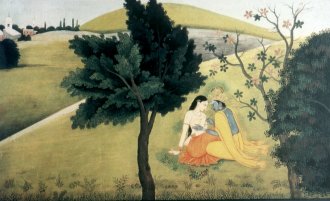 |
| fascinating
question of the relationship |
|
| between the
sexes. And, yes, with |
|
| sexuality. We
will first travel to the |
|
| past, to the
"golden age" of Indian |
|
| civilization.
What were our ancient |
|
| sexual mores
and attitudes? How have |
|
| they changed
over the centuries? What |
|
| are the
contemporary trends in intimate |
|
| relations? |
|
|
|
| |
|
|
| |
|
|
| |
|
|
| |
|
|
| |
|
|
| |
|
|
| |
|
|
| |
|
|
| |
|
|
| |
|
|
|
|
| |
|
The journey will take many months and begins with the
Kamasutra. Yes, Sanskrit dramas |
|
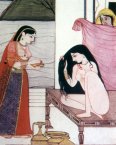 |
|
and love poetry give us tantalizing glimpses of the ways men and women fantasized about |
|
| |
and approached each other. But if one really wants to know about intimate relations in the |
|
| |
classical age, there is no better source than the
Kamasutra. An ancient book that is also |
|
| |
startlingly modern in many of its attitudes. A text as maligned as it is misunderstood. For |
|
| |
the
Kamasutra, as most people think is not about positions in sexual intercourse. It is, as |
|
| |
Wendy Doniger remarks in a soon to be published translation (with Sudhir
Kakar), about |
|
| |
finding a partner, maintaining power in a marriage, committing adultery, living as or with |
|
| |
a courtesan, using drugs-and also about the positions in sexual intercourse. |
|
| home |
|
|
|
|
| prologue |
|
THE KAMASUTRA |
|
| welcome |
|
|
|
|
| contents |
|
| The Kamasutra is a treasury of information |
|
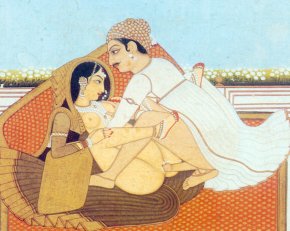
|
| about sexuality in ancient India. No other |
|
| existing text, literary or scientific, comes even |
|
| close to it in revealing the sexual attitudes of |
|
| our ancestors. The Kamasutra tells us about |
|
| the place of pleasure in the ancient scheme of |
|
| things. Especially vis-a-vis morality. It tell us |
|
| what the ancients thought about the sexuality |
|
| of women. About marriage. About homosexuality. |
|
| adultery. Prostitutes, male and female. But |
|
| before we look at the different sexualities, we |
|
| need to first get acquainted with the text itself. |
|
|
|
| subject
moderators |
|
|
| history |
|
|
| sexuality |
|
|
| social
landscapes |
|
|
| art |
|
|
| dance |
|
|
| literature
|
|
|
| music |
|
|
| cinema |
|
|
| environment |
|
|
| economics |
|
|
| pot pourri |
|
|
|
| feedback
|
|
|
|
| |
|
What is the
Kamasutra? |
|
 |
|
|
|
|
| |
First, it is the oldest existing textbook of erotic love in India. It was composed in Sanskrit, |
|
| |
the literary language of the classical period. Its authorship is attributed to Mallanaga |
|
| |
Vatsyayana.
Nothing is known about the author except, as he tells us in the text, he |
|
| |
composed it "in chastity and in the highest meditation." It was these words that led me |
|
| |
to call my fictional biography of the author of the
Kamasutra, published a couple of years |
|
| |
ago, "The Ascetic of Desire." |
|
| |
|
|
|
| |
 |
|
Vatsyayana also tells us that the Kamasutra is not |
| |
an original text but a distillation of the works of |
| |
other authors who preceded him. They are |
| |
Shvetaketu Auddaliki and Babhravya who wrote |
| |
standard works on the subject. But also |
| |
Suvarnanabha who wrote on erotic advances, |
| |
Ghotakamukha on the seduction of girls, |
| |
Gonardiya on the duties and rights of a wife, |
| |
Gonikaputra on sexual relations with other men's |
| |
wives, Dattaka on courtesans and Kuchumara on |
| |
occult sexual lore. All these works are lost. |
|
|
| |
|
| |
|
| |
|
|
| |
|
|
| |
|
|
| |
|
|
| |
|
|
| |
|
|
| |
|
|
| |
|
|
| |
|
The
Kamasutra, then, is not the first text in the Hindu science of erotics. Nor was it the
last. Many
|
|
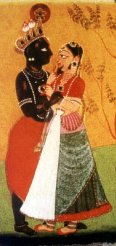 |
|
others
followed. All acknowledged Vatsyayana's pre-eminence. The best-known of the later texts
|
|
| |
are Kokkaka's Ratirahasya (pre-13th century), well-known today under
the name of Kokshastra,
|
|
| |
Kalyanmalla's Anangranga (15th century), Bhikshu Padamshri's
Nagarasarvasva and Jyotirishvara's
|
|
| |
Panchasayaka (11th to 13th centuries). The date of
Kamasutra's own composition is uncertain.
|
|
| |
Though different dates between the 1st and
5th centuries have been advanced by scholars, the best
|
|
| |
guess is that it was written
sometime in the second half of the 3rd century.
Most believe that it was
|
|
| |
composed in
North or Northwestern India. Why North? Because the text exhibits a detailed knowledge
|
|
| |
of this part of the country. And it is often condescending, if not downright disapproving
when it talks
|
|
| |
of sexual practices in the eastern and southern parts of India.
|
|
| |
|
|
|
| |
| Most of the Kamasutra is in the form of sutras. A |
|
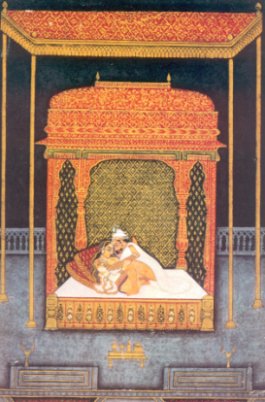 |
| sutra, literally a thread, on which pages (palm leaves) |
|
| or thoughts
are strung, is a prose aphorism. A sutra is |
|
| generally so
condensed and cryptic that its meaning |
|
| is not
completely clear. It often needs the help of a |
|
| commentary
before the meaning reveals itself. The |
|
| best known
commentary on the Kamasutra is from |
|
| the 13th
century. This is the Jayamangla by |
|
| Yashodhra
which nowadays always accompanies the |
|
| original text.
The Kamasutra is not entirely in prose. A |
|
| few verses,
shlokas, are cited at the end of each |
|
| chapter.
Generally, the prose parts describe what |
|
| people actually do while
the verses are more |
|
| imperative in tone. They tell people
what they should |
|
| do. We do not know the origins of
these verses. They |
|
| may derive from other, unknown
texts or composed |
|
| by Vatsyayana himself. |
|
 |
|
| |
| |
|
|
| |
|
| |
|
| |
|
| |
|
|
| |
|
|
| |
|
|
| |
|
|
| |
|
|
| |
|
|
| |
|
|
| |
|
|
| |
|
|
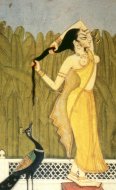 |
|
|
| |
|
| |
|
| |
|
| |
|
| |
|
| |
|
| |
|
|
|
| |
The Kamasutra is divided into seven parts: General Observations, Sexual Approaches,
Seduction of |
|
| |
a Virgin, Rights and Duties of a Wife, Other Men's Wives, On Courtesans
and, Occult Sexual Lore. Of |
|
| |
|
these, the second part, with its description of positions of
sexual intercourse, of caresses, kisses, |
|
| |
|
scratches and love bites, is the best known. Or,
rather, notorious. The primary aim of all the chapters |
|
| |
|
is the pursuit of pleasure. Actual
sources of pleasure in classical India are
surveyed. Other sources |
|
| |
|
of pleasure are
suggested. Yet, besides the sex, the Kamasutra has a great deal
of information |
|
| |
|
about
daily life in ancient India. About fashion. Food. Games. Drugs. But also
about the banal aspects |
|
| |
|
of housekeeping. But enough on the architecture of the
Kamasutra. The next time we'll enter one of |
|
 |
|
the rooms of this grand edifice. The Women's Room. That is,
we'll discuss the theme of women and |
|
| |
sexuality. Not only in the Kamasutra but also in
ancient India. |
|
| |
| |
|
 |
|
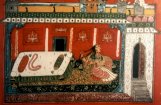 |
|
Love,
|
|
|
| |
|
|
| Sudhir
|
|
|
| |
|
|
|
|
|
|
|
|
| |
|
| |
|
| |
|
| |
|
| |
|
|
|
|
| |
|
|
|
|
| |
|
|
TOP
|
|
| |
|
|
|
![]()
![]()
![]()

![]()















